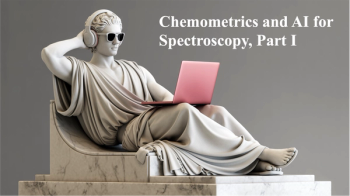
- The Application Notebook 09-01-2019
- Volume 34
- Issue 9
Analysis of Organic Chlorides in Crude by ASTM D4929, PART C
The analysis of organic chloride in crude is demonstrated per ASTM D4929 Part C using Monochromatic EDXRF (MEDXRF).
The analysis of organic chloride in crude is demonstrated per ASTM D4929 Part C using Monochromatic EDXRF (MEDXRF).
Chlorides in crude contribute to corrosion in the piping at refineries during cracking as well as mid-stream in pipelines. Organic chlorides do not naturally occur in crude, however inorganic chlorides in the form of salts as well as residual organic chlorides from various natural sources as well as adulteration can contaminate crude. Contracts at the pipelines may contain clauses limiting the amount of organic chloride allowed in the crude. And at the refinery after desalting and desulfurization, crude needs to be analyzed for any residual organic chlorides possibly still entrained in the feedstock to avoid potential damage during the refining process.
Experimental Conditions
Instrumentation
Type: Monochromatic EDXRF (MEDXRF) 90° Cartesian Geometry Polarization
Model: Rigaku NEX CG
X-ray tube: 50 W Pd-anode
Detector: Silicon drift detector (SDD)
Sample tray: 15-position Autosampler
Film: Polypropylene (4 um)
Analysis Time: 300 s
Environment: Helium
Sample Preparation
ASTM D4929 is designed for the measurement of residual organic chlorides in crude. The crude sample is first prepared by distillation and wash to remove H2S and inorganic chlorides. After distillation and wash processes the resulting naphtha fraction is analyzed for Cl content by XRF using Part C methodology. The naphtha fraction is typically stable containing less than 1000 mg/g S. XRF calibration is made using mineral oil calibration standards, as mineral oil models naphtha for X-ray response.
To prepare a sample for XRF analysis simply place 4.0 g of the naphtha sample in a standard 32-mm XRF sample cup and measure directly.
ASTM D4929 Calibration: Part C XRF
Empirical calibration was made using commercially available mineral oil standards. For optimum calibration, the standards contain both S and Cl, with S content ranging from 100 to 1000 mg/kg (Table I). Alpha corrections are automatically employed to compensate for sulfur's effect on chlorine X-rays.
Precision and Repeatability
To demonstrate recovery, precision, and repeatability of the measurement, a few calibration standards were selected with results shown in Table II.
Detection Limits
The empirical method is used to determine detection limits using 300 s measurement time. Ten repeat analyses of a blank mineral sample are taken with the sample in static position and the standard deviation (σ) is determined. The lower limit of detection (LLD) is then defined as three times the standard deviation (3 σ) as in Table III.
Conclusions
The performance shown here demonstrates NEX CG provides excellent sensitivity and performance for the measurement of chromium conversion coatings on aluminum.
Applied Rigaku Technologies, Inc.
9825 Spectrum Drive, Bldg. 4, Suite 475, Austin, TX 78717
tel. (+1) 512-225-1796
Website:
Articles in this issue
over 6 years ago
Microparticle in Focusover 6 years ago
Diamond ATR Study of Worn Surfaces on MetalNewsletter
Get essential updates on the latest spectroscopy technologies, regulatory standards, and best practices—subscribe today to Spectroscopy.



